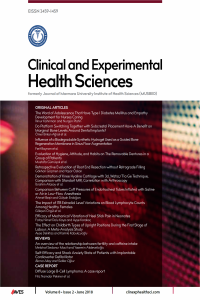Abstract
Keywords
References
- Oertelt-Prigione S. Immunology and the menstrual cycle Autoimmun Rev 2012; 11: A486-92
Abstract
Objective: To investigate the effects of 17β-estradiol (E2) levels on
blood lymphocyte counts in women.
Methods: Blood samples were obtained from 428 healthy women. Serum
E2 levels were measured using the solid-phase enzyme-labelled
chemiluminescent method. Complete blood count was performed by
a fully automated cell counter. White blood cell differential, including
lymphocytes, was performed by volume, conductivity, and five-part
scatter measurements (VCS technology). The participants were divided
into four groups, according to the blood lymphocyte levels: <1000
cells/μL (Group A), 1001–2000 cells/μL (Group B), 2001–3000 cells/μL
(Group C), and 3001–4000 cells/μL (Group D).
Results: The mean age of the participants was 37.03 years (between
15 and 66 years). E2 levels on admission in the study group ranged
from <11 to 4264 pg/mL, and the median E2 level was 121.98. Twelve
women had high levels of E2, as a result of the ovulation induction
treatment. Total lymphocyte count varied between 0.9×103 to as high
as 105×103 cells/μL, and the median lymphocyte count was 2.6×103
cells/μL. Lymphocyte–white blood cell ratio (LWR) was also studied
in addition to lymphocyte levels. The lowest LWR value was 9.1 and
the highest was 99.7. The medium E2 concentration was 40.3±11,
114±144, 117.2±128, and 192.2±595 in Groups A–D, respectively. The
relationship between lymphocyte counts and LWR was positive, as expected.
There were no statistically significant differences in lymphocyte
counts either with age or E2 levels.
Conclusion: It is well established that estrogens affect lymphocyte
functions in several ways. In the present study, we were unable to
demonstrate a correlation between the E2 serum levels and blood
lymphocyte counts in women.
Keywords
References
- Oertelt-Prigione S. Immunology and the menstrual cycle Autoimmun Rev 2012; 11: A486-92
Details
| Primary Language | English |
|---|---|
| Journal Section | Articles |
| Authors | |
| Publication Date | June 15, 2018 |
| Submission Date | June 19, 2017 |
| Published in Issue | Year 2018 Volume: 8 Issue: 2 |


